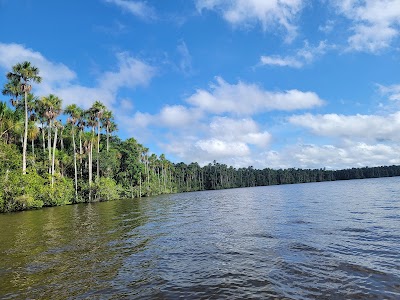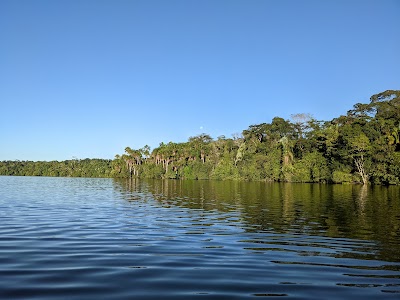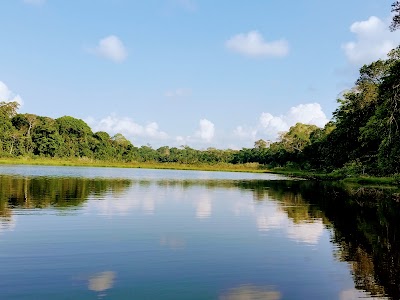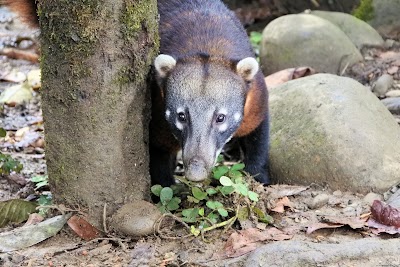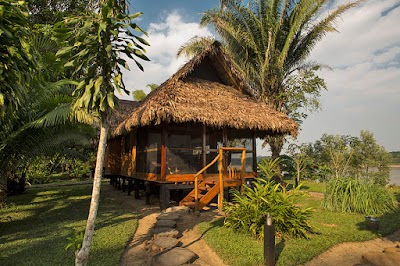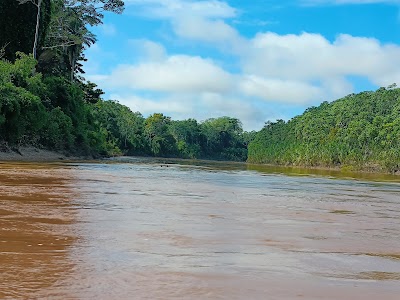Reserva Nacional de Tambopata (Reserva Nacional de Tambopata)
Overview
Overview of Reserva Nacional de Tambopata
Reserva Nacional de Tambopata, nestled in the Madre de Dios region of Peru, is a stunningly biodiverse conservation area that enthralls nature enthusiasts and casual travelers alike. Spanning over 274,000 hectares of protected rainforests, rivers, and lakes, this reserve offers a breathtaking glimpse into the heart of the Amazon Basin, serving as a sanctuary for a remarkable array of wildlife.
History and Importance
Established in 2000, Tambopata National Reserve was created to safeguard its unique ecosystems, increasingly threatened by logging, mining, and agricultural expansion. In a collaborative effort, the Peruvian government and international conservation organizations recognized the ecological significance of this area, striving to preserve its natural beauty and biological richness for future generations. The reserve derives its name from the Tambopata River, which flows through its core, acting as a lifeline for its diverse flora and fauna.
Biodiversity
The importance of Reserva Nacional de Tambopata cannot be overstated. It forms part of the larger Tambopata-Madidi Biodiversity Corridor, one of the planet's richest natural areas. This corridor is home to around 1,234 species of butterflies, approximately 592 bird species, 120 species of reptiles and amphibians, and at least 169 species of mammals, including majestic jaguars, elusive pumas, and the fascinating giant otters. The reserve also boasts an impressive variety of plant life, from towering trees to delicate orchids, making it a critical component of the global ecological landscape.
Visitor Experience
One of the most alluring aspects of Tambopata is its accessibility for visitors seeking an authentic Amazonian adventure. Despite its remote location, the reserve features various eco-lodges and guided tours that offer comfortable accommodations and valuable insights into the area's ecology. Travelers can embark on guided rainforest walks, enjoy boat trips along the Tambopata River, or visit clay licks where hundreds of colorful parrots and macaws converge in a vibrant display. These clay licks are particularly popular among birdwatchers and photographers, providing an unparalleled opportunity to observe and capture the beauty of these magnificent birds up close.
Scientific Research
Tambopata also plays a significant role in scientific research, serving as an outdoor laboratory for studies related to tropical ecology, biodiversity, and conservation strategies. The Tambopata Research Center, one of the most remote lodges in the Amazon, provides a base for researchers and tourists alike to explore and understand rainforest dynamics. Research projects conducted here have greatly enhanced our understanding of tropical ecosystems and the impacts of human activities on these delicate environments.
Cultural Insights
For those interested in indigenous cultures, a visit to Tambopata offers a unique opportunity to learn about the traditional lifestyles of local communities. The Ese Eja people, who have coexisted with the forest for generations, share their knowledge of medicinal plants, sustainable practices, and cultural heritage with visitors. This cultural exchange enriches the travel experience and fosters a deeper appreciation for the intricate connections between human and natural worlds.
Adventure Awaits
Tambopata is also a haven for adventure seekers, offering a variety of activities such as jungle treks, canopy walkways, zip-lining, and kayaking. These exhilarating experiences allow tourists to interact with the environment in dynamic ways, ensuring that each visit is both thrilling and educational. Whether spotting a caiman under the moonlight during a night safari or paddling quietly through a secluded oxbow lake, every moment spent in Tambopata promises to be unforgettable.
Conclusion
In summary, Reserva Nacional de Tambopata in Madre de Dios, Peru, is a must-visit destination for anyone passionate about natural beauty, wildlife, and cultural heritage. Its rich biodiversity, combined with dedicated efforts to protect and study these ecosystems, makes it a vital part of the Amazon Basin. Accessible yet remote, it offers a plethora of activities and learning opportunities suitable for diverse interests and ages. Whether you're an experienced adventurer, an aspiring naturalist, or simply in search of the tranquility found in pristine nature, Tambopata promises an unforgettable journey into one of the world's most profound wilderness areas.


